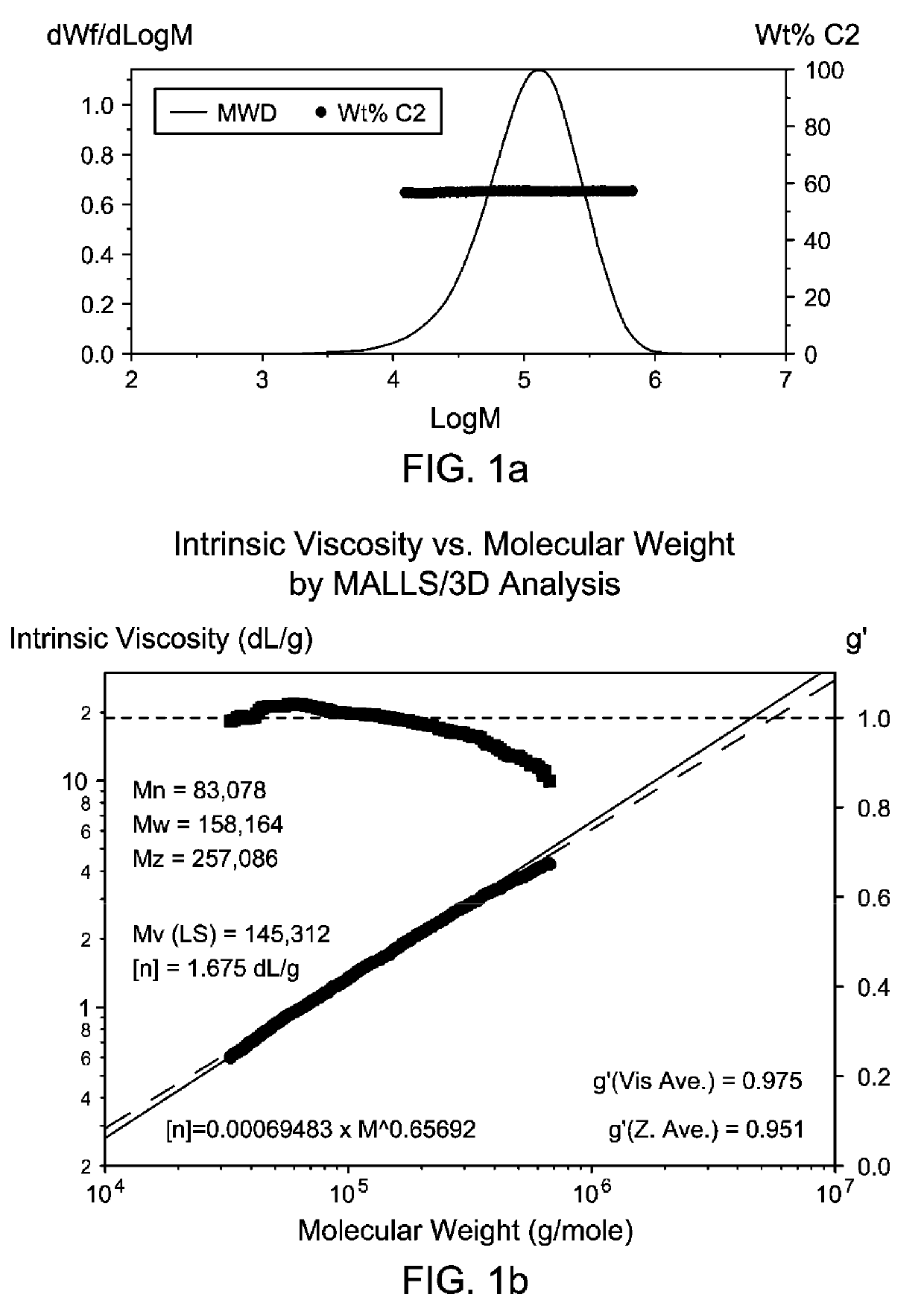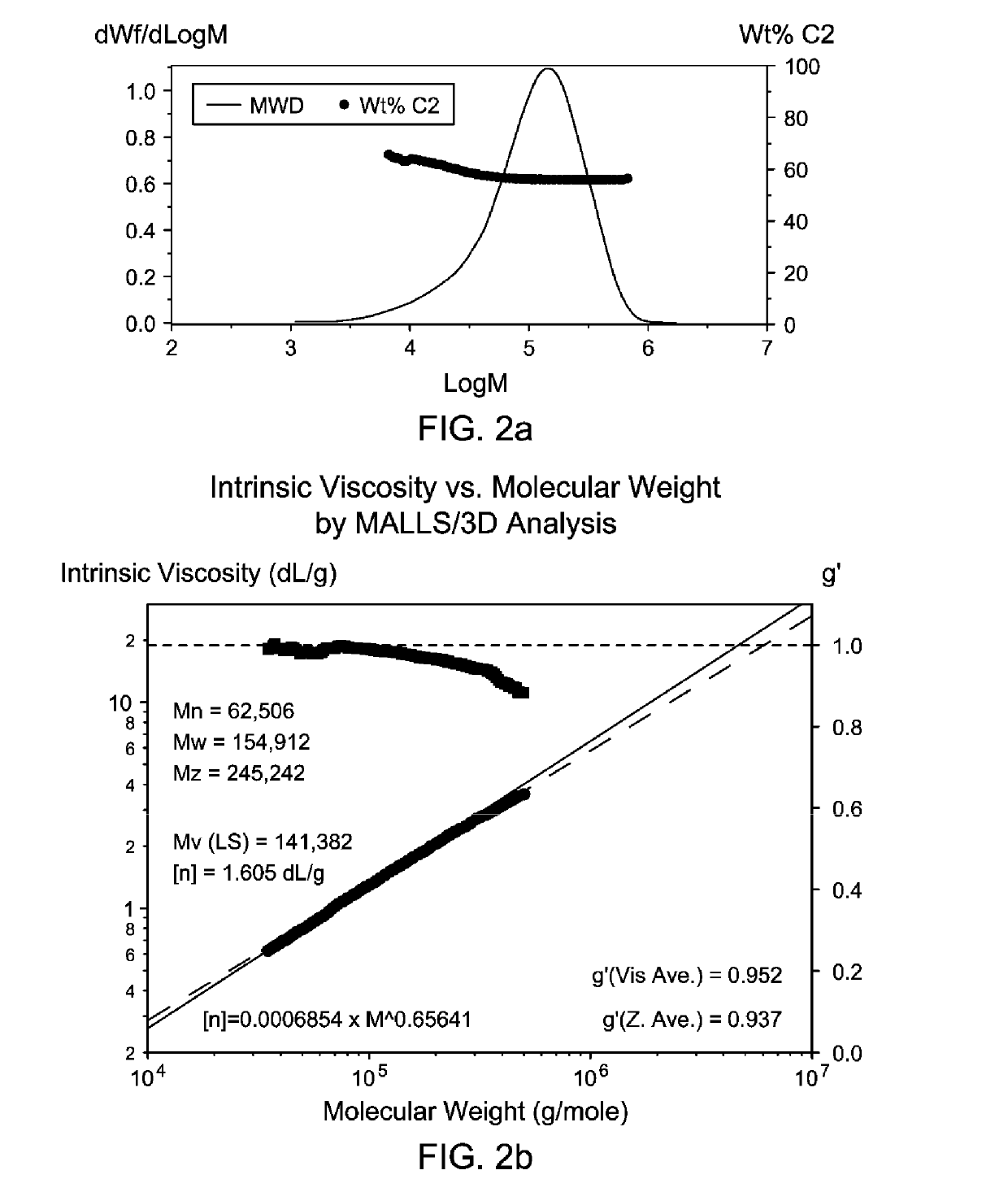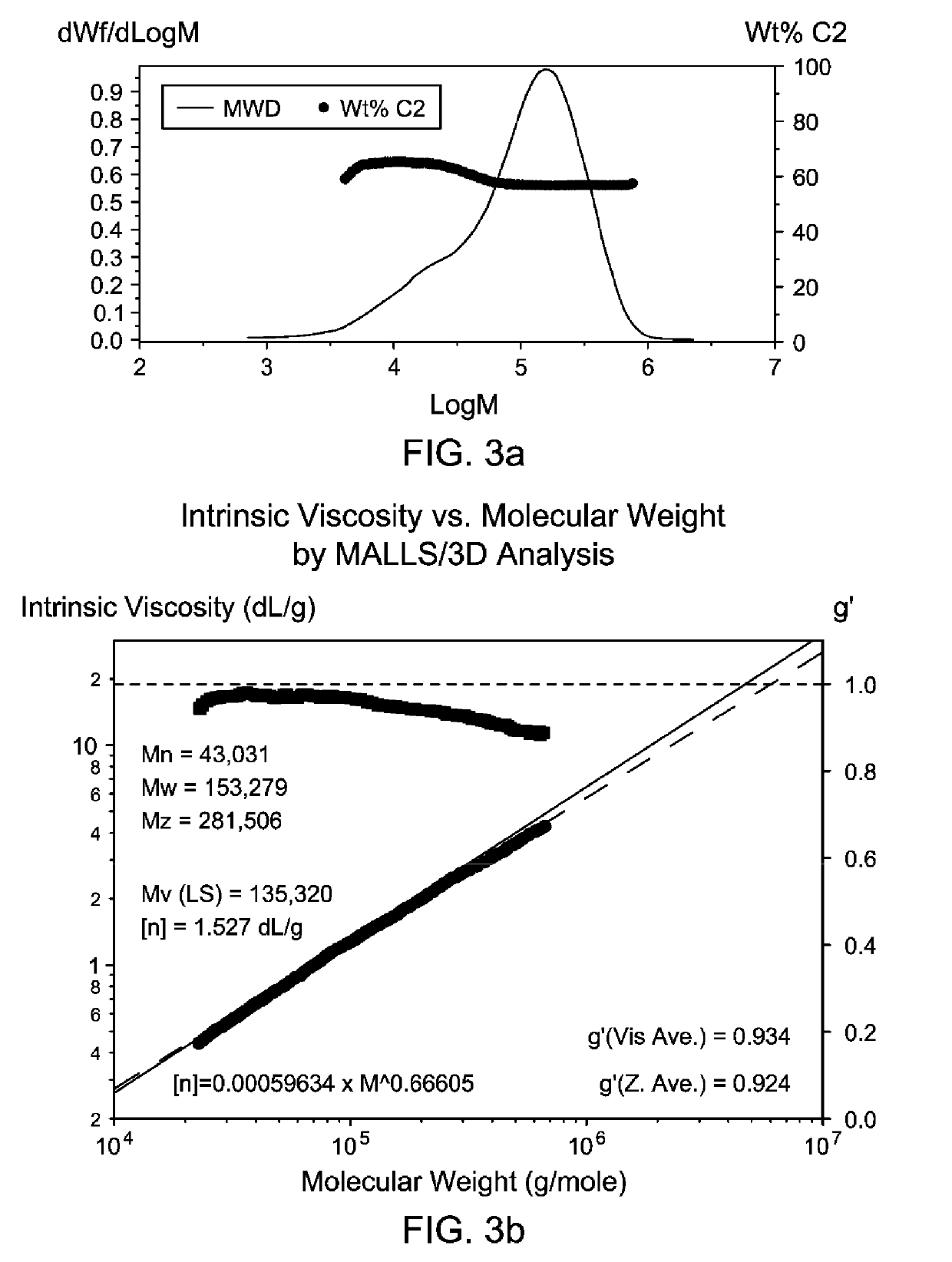Lubricating Oil Compositions Comprising Dual Metallocene-Catalyzed Bimodal Copolymer Compositions Useful as Viscosity Modifiers
a technology of bimodal copolymer composition and lubricating oil, which is applied in the direction of lubricant composition, additive, petroleum industry, etc., can solve the problems of poor thickening efficiency, easy oxidation and degradation, etc., and achieves excellent branching, advantageous and surprising properties, and suitability for deployment
- Summary
- Abstract
- Description
- Claims
- Application Information
AI Technical Summary
Benefits of technology
Problems solved by technology
Method used
Image
Examples
example 1
[0135]Polymerizations of ethylene and propylene were carried out using a solution process in a 28 liter continuous stirred-tank reactor (autoclave reactor). The autoclave reactor was equipped with a stirrer, a water-cooling / steam-heating element with a temperature controller, and pressure controller. Isohexane was used as a solvent. It was fed into the reactor using a Pulsa pump and its flow rate was controlled by adjusting the outflow at the pump (using a calibration curve). The compressed, liquefied propylene feed was controlled by a mass flow controller. Ethylene was mixed with propylene before the reactor and fed to the manifold. A 3 wt % mixture of tri-n-octylaluminum (TNOAL) in isohexane was also added to the manifold through a separate line (used as a scavenger) and the combined mixture of monomers and solvent was fed into the reactor using a single tube.
[0136]Catalyst solution included Catalyst A (1,1′-bis(4-triethylsilylphenyl)methylene-(cyclopentadienyl)(2,7-di-tertiary-bu...
example 2
[0141]Lubricant solution blending experiments were carried out using a polyalphaolefin, PAO4 (4 centipoise viscosity, 25° C.) as the base stock. R1, E1, E2, and Paratone™ 8900G, an OCP viscosity modifier which is linear with narrow molecular weight distribution, were blended in PAO4 at 0.5 wt % with the addition of antioxidants (AO) of Irganox 1076 at 0.015 wt % and Irgafos 168 at 0.005 wt %. Antioxidants are useful in preventing polymer degradation during their rheological evaluations. The density values of those lubricant solutions thus prepared are listed in Table 3.
TABLE 3Density Values of Example 2 Lubricant SolutionsLUBEg / ml @ 40° C.g / ml @ 90° C.PAO4 + AO + R10.804050.77245PAO4 + AO + E10.804070.77246PAO4 + AO + E20.804040.77245PAO4 + AO + Paratone 8900G0.804060.77247
[0142]Using an ultra-high shear viscometer (shear rate range from 106 to 107 l / s) and a m-VROC micro-capillary viscometer (shear rate range from 103 to 106 l / s) operating at various temperatures, viscosity values ...
example 3
[0146]Samples of E2 (in accordance with Example 1 and 2 above) and E3, another bimodal ethylene-propylene copolymer composition made in accordance with the same procedure described with respect to E1 and E2, were used in this Example. Table 4 below reiterates some of E2's characteristics, and also provides E3's corresponding characteristics.
TABLE 4Example 3 Bimodal Ethylene Copolymer CompositionsC13 NMRGPC-3DGPC-4DSampleC2 wt %MwLSMnDRIMw / MnMwDRIMnDRIMw / MnC2 wt %E257.8153,27934,0034.5154,02838,7714.058.2E358.3175,79150,2993.5158,55539,9544.058.7
[0147]E2 and E3 were blended with Americas regional CORE™ 150 base stock oil, an API Group I base stock oil available from ExxonMobil, having the properties in Table 5, such that the blend comprised 1.15 wt % of each polymer.
TABLE 5CORE ™ 150 Base Stock PropertiesStandardPropertyMethod (a)LimitCORE 150ASTM ColourASTM D 1500Max1.5CCS Viscosity −25° C.ASTM D 5293MaxmPa · secCCS Viscosity −20° C.ASTM D 5293Max2100mPa · secFlash Point, COC Deg C....
PUM
| Property | Measurement | Unit |
|---|---|---|
| Shear Stability Index | aaaaa | aaaaa |
| PDI | aaaaa | aaaaa |
| PDI | aaaaa | aaaaa |
Abstract
Description
Claims
Application Information
 Login to View More
Login to View More - R&D
- Intellectual Property
- Life Sciences
- Materials
- Tech Scout
- Unparalleled Data Quality
- Higher Quality Content
- 60% Fewer Hallucinations
Browse by: Latest US Patents, China's latest patents, Technical Efficacy Thesaurus, Application Domain, Technology Topic, Popular Technical Reports.
© 2025 PatSnap. All rights reserved.Legal|Privacy policy|Modern Slavery Act Transparency Statement|Sitemap|About US| Contact US: help@patsnap.com



